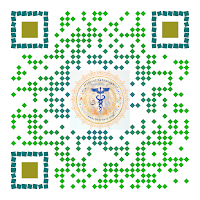The
most common cause of hyperparathyroidism is Parathyroid adenoma. Another cause
is hyperplasia of the parathyroid glands.
Parathyroid
hormone (PTH) increases serum calcium by
·
Enhancing
distal tubular calcium reabsorption
·
Rapidly
mobilizing calcium and phosphate from bone (bone resorption)
·
Increasing
intestinal absorption of calcium by stimulating conversion of vitamin D to its
most active form, calcitriol
Hyperparathyroidism
is characterized as:
·
Primary:
Excessive secretion of PTH due to a disorder of the parathyroid glands
·
Secondary:
Hypocalcemia due to non-parathyroid disorders leads to chronic PTH
hypersecretion
·
Tertiary:
Autonomous secretion of PTH unrelated to serum calcium concentration in
patients with long-standing secondary hyperparathyroidism
Primary
hyperparathyroidism: excessive secretion of PTH by one or more parathyroid
glands. Incidence increases with age and is higher in postmenopausal women. Primary
hyperparathyroidism causes hypercalcemia, hypophosphatemia, and excessive bone
resorption (leading to osteoporosis).
Secondary
hyperparathyroidism occurs most commonly in advanced chronic kidney disease
when decreased formation of active vitamin D in the kidneys and other factors
lead to hypocalcemia and chronic stimulation of PTH secretion.
Hyperphosphatemia that develops in response to chronic kidney disease also contributes.
Other less common causes of secondary hyperparathyroidism include
·
Decreased
calcium intake
·
Poor
calcium absorption in the intestine due to vitamin D deficiency
·
Excessive
renal calcium loss due to loop diuretic use
·
Inhibition
of bone resorption due to bisphosphonate use
Tertiary
hyperparathyroidism results when PTH secretion becomes autonomous of serum
calcium concentration and generally occurs in patients with long-standing
secondary hyperparathyroidism, as in patients with ESRD of several years’
duration.
Indications
of surgery:
·
Serum
calcium 1 mg/dL greater than the upper limits of normal
·
Calciuria
> 400 mg/day
·
Creatinine
clearance < 60 mL/minute
·
Peak
bone density at the hip, lumbar spine, or radius 2.5 SD below controls (T score
= −2.5)
·
Age
< 50 years
·
The
possibility of poor adherence with follow-up
Secondary
hyperparathyroidism in patients with renal failure can result in a number of
symptoms, including
·
Osteitis
fibrosa cystica with arthritis, bone pain, and pathologic fractures
·
Spontaneous
tendon rupture
·
Proximal
muscle weakness
·
Extra-skeletal
calcifications, including soft tissue and vascular calcification
·
Pruritis

.jpg)
,%20especially%20in%20the%20early%20stages.%20When%20present,%20symptoms%20are%20vague%20&%20nonspecific.%20Early%20symptoms%20-%20severe%20fatigue%20(74%25),%20impotence%20(45%25),%20arthralgia%20(44%25).%20Most%20common%20s.jpg)


















.png)









